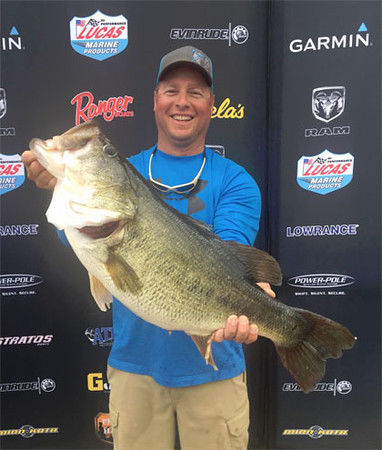Saturday’s ShareLunker a day late
Published 12:18 pm Tuesday, April 4, 2017

- TPWD/Courtesy
STEVE KNIGHT/steve@texasalloutdoors.com
In an effort to quell complaints about mortality within the Toyota ShareLunker program Texas Parks and Wildlife Department might have lost a chance at something special because of a hard and fast rule.
Trending
New rules initiated into the program this year call for the department to only retain bass 13 pounds and larger that are caught between Jan. 1 and March 31. The reason is history has shown those to be the fish most likey to spawn at a state hatchery.
The new rules were announced at the same time that the department said it would be switching its hatchery broodfish to ShareLunker offspring only in an attempt to use the best of the best for lake stockings.
The new rules and goals were tested Saturday, April 1, when Kurt Luker of Cleveland caught a 13.97-pound bass during a Texas Team Trail tournament on Lake Belton.
Following the rules the fish was weighed by a department staff member and a fin pulled for DNA testing before the bass was released back into the lake.
What makes this fish interesting is not that it was Belton’s first ShareLunker, but that it was 28.75 inches long and 22 inches in girth. The 28.75-inch length makes it the longest of 570 ShareLunker entries by a quarter inch. In comparison, Barry St. Clair’s 18.18-pound state record basswas only 25.5 inches long.
Just for statistical grins, its 22-inch girth made it the second fattest entry of the season. St. Clair’s had not spawned and was 24.5 inches in girth.
Trending
Now all that may not mean anything in the grand scheme of things, but it would seem that the longest fish in program history might be of genetic interest to the potential for producing brooders.
However, there never was any thought with breaking from the deadline rules, according to Mandy Scott, Texas Freshwater Fisheries Center director.
“No, we are really trying to move toward more clear-cut rules for the program, so that the public has a very clear understanding of our operations as well as our purpose. Our historical data showed us that March 31 is the most logical cut-off date for bringing fish back for spawning, so we made the decision based on our data,” Scott explained.
She added that holding the fish for a year created too many risks in regards to the fish’s health.
The whole thing of what fish is going to be the best for producing future trophies is a roll of the dice similar to the NFL or NBA draft when it comes to predicting the next great players. But there is one axiom in sports that seems to be relevant here, you can’t coach size and without a second look TPWD released its longest prospect ever.



